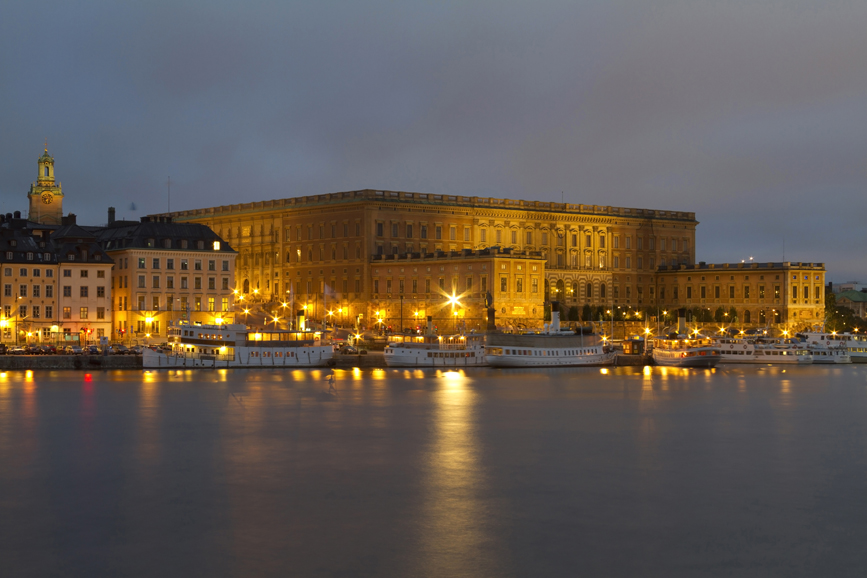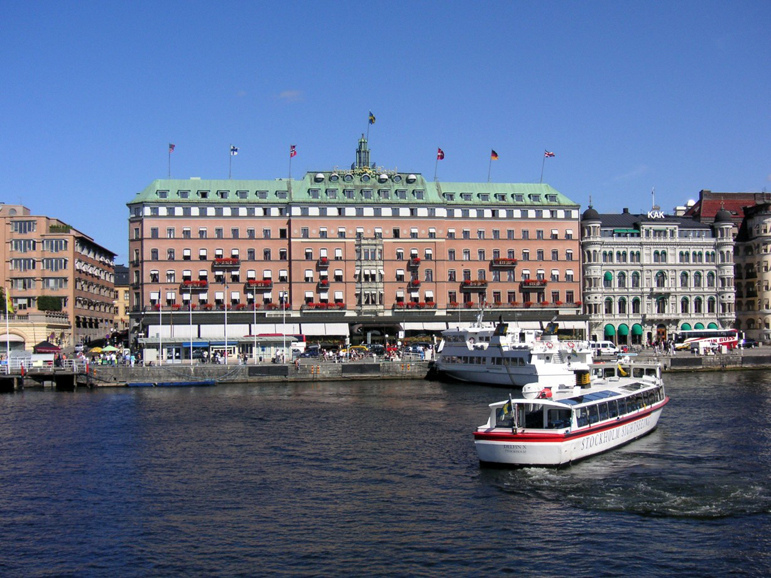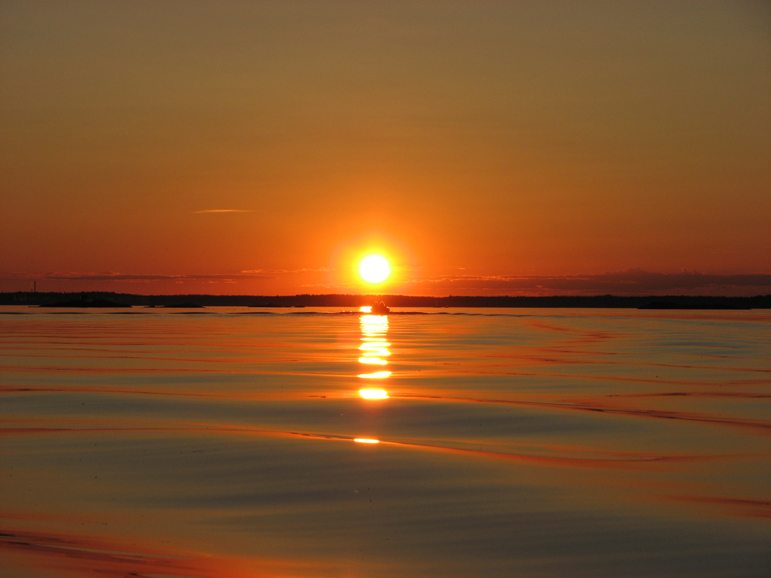Värmdõ, Värddõ and Västan are lined up on the quay, bang outside my window.
Not brawny Swedish youths as you might think or hope, but sleek, white ferries, waiting to take passengers to the islands.
There are a staggering 24,000 islets in the Stockholm archipelago, although only a thousand or so are inhabited.
From the moment we fly in, almost skimming forests of fir and pine, I find this handsome northern city to be delightfully easy on the eye. It’s also a one-off.
The chain stores that can make other European high streets seem depressingly familiar have bypassed Stockholm. Civic buildings thrust upward with pride. Turrets, domes and spires punctuate the skyline, and everywhere you turn there’s water.
Across from the Grand Hôtel, where everyone who’s anyone has stayed, the Royal Palace beckons.
I cross the Strömbron — Stockholm’s unloveliest bridge — and climb the hill. St Peter’s in miniature, Stockholmers call the crescented court in front of the palace. The royal family no longer lives there, but it is where the king works — driving himself every day in true, democratic style.
The Old Town, Gamla Stan, starts here. It’s a tangle of cobbled streets and gabled roofs, dating from the 13th century, untouched by war or even mild, civil dissent.
Sure, there are shops selling the usual tourist tat. But there are also stores with cutting-edge Swedish design. And then there are the coffeehouses, with their cramped seats and steamy windows, sending out their siren call.
Tonight we dine at The Veranda in the Grand Hôtel and very grand it is, too, with its traditional smorgasbord of soup, herrings, warm potatoes, gravlax and other fish, followed by salads, cold meats, meatballs, beef and chicken, all washed down with Aquavit and beer.
You don’t go far in Stockholm without Aquavit and smorgasbord cropping up. Or the name “Nobel.” The old Stock Exchange in Gamla Stan is now the home of the Nobel Museum, one of nearly 100 museums in the city. But the annual prize-giving ceremony is held across the water at City Hall. Built between 1911 and 1923 in the National Romantic style, City Hall, of all Stockholm’s must-sees, comes top of the list. Its first-floor Golden Hall is decorated with around 17 pounds of gold leaf and 18 million pieces of mosaic.
Lunchtime rolls around and sightseeing has made me hungry. At Östermalms Saluhall, the beautiful, 19th-century, wood-built market, my eyes are out on stalks, taking in the reindeer fillets, elk sausage and 20 kinds of herring.
The hot-ticket Saturday lunch reservation however is at Lisa Elmqvist’s gingham tableclothed restaurant, where at midday people are already tucking into vast platters of turbot, speckled plaice, halibut and Arctic char. But I stupidly haven’t booked and, damn, they’ve no room for me.
So I head instead to the Djurgården, Stockholm’s pleasure garden island, where fingers of sea dip between scalloped bays.
At Rosendals Trädgård, a commercial organic garden and plant nursery, you collect your food — pingingly fresh egg-and-anchovy sandwiches, or oversized salads of flageolet beans and new-season girolles — in one of the greenhouses, and eat it at wooden tables dotted around the nursery, or sur l’herbe, under the trees.
Instead of cabbing it back to town, I catch a ferry. Ten minutes from the Djurgården and I’m on the Strandvägen, built in 19th-century French style, where restored three-bedroom apartments go for $2 million or more. I’m keen to check out the Svenskt Tenn design store. Established in the 1920s by Estrid Ericson, this Swedish household name was for years thought to be too old-hat and bourgeois to be interesting, but now, suddenly, Svenskt Tenn is very in again. I love the psychedelic fabrics and wallpapers and I’m crazy for the furniture — but you can’t fit a sideboard in a weekend tote.
On Saturday night, I head out of town. About 40 minutes by taxi, followed by a five-minute ferry ride across the water at sunset, brings us to Marcus Ek’s restaurant, located in the quarry master’s house on the tiny island of Oaxen.
The style is clapboard New England and Swedish Modern rolled into one. Ek is now one of Europe’s hottest chefs, with vast numbers of gastro-pilgrims making the complicated journey out to Oaxen. Whether or not you rate his food, you will never forget his ineffably romantic, waterside restaurant.
On Sunday, someone suggests a RIB boat ride. RIB stands for rigid inflatable boat — so far so good — except that you straddle the seats like Jet Skis. Then these beasts fly across the water at 50 mph. Yes, you get to see quite a bit of the archipelago in a short space of time, but at a high cost to your inner peace — and your spine.
Next time I’ll cruise the archipelago by sailboat, or maybe under steam, which is easily done, now that many of the old steamboats that used to ply their passage through the islands have been reclaimed and restored.
And there will be a next time. I’m utterly smitten with Stockholm – and the smiling Stockolmers. They’re as gracious as they are fair of face.




